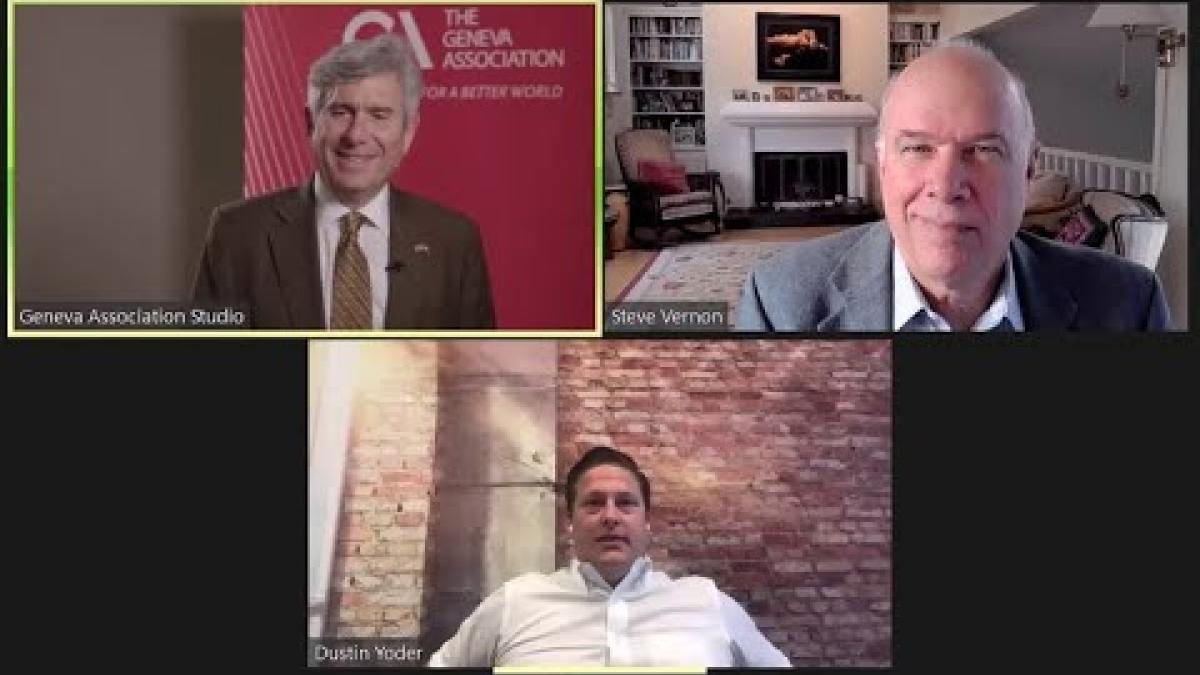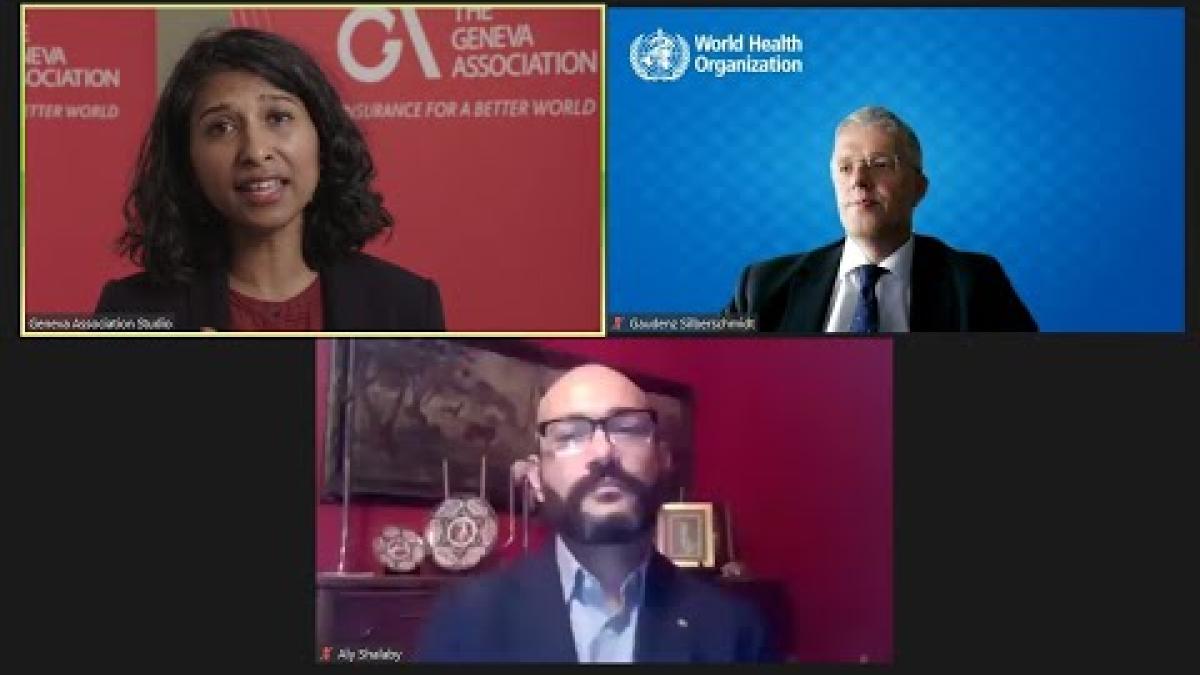Virtual conference
Each year the Health & Ageing Conference brings together insurance leaders in health and life and annuities and pensions, academics and experts to discuss the role of the life insurance industry in addressing issues related to ageing societies and emerging health trends.
As the world responds to the COVID-19 pandemic, the theme of the conference could not be more relevant:
‘Living longer, healthier and with greater financial security’
Benjamin Franklin is attributed to saying, “An ounce of prevention is worth a pound of cure.” This is more true today than ever. Preventing disease and helping people to achieve better life outcomes is not just a matter of public policy. The insurance industry is rising to this challenge with a renewed focus on better health and financial planning throughout customers’ lifetimes.
Building on the discussions of our 2019 conference, we will delve into public health policy and how the insurance industry can contribute to peoples’ financial health and wellness, for example through investments in disease prevention and more innovative and attractive products. In the conference’s signature ‘View from Above’ session, insurance company CEOs will discuss how they are dealing with these complex challenges—from preparing for future disruptive scenarios to managing today’s diverse and frequently conflicting stakeholder expectations.
Living longer, healthier and with greater financial security
Co-organised with Prudential Financial
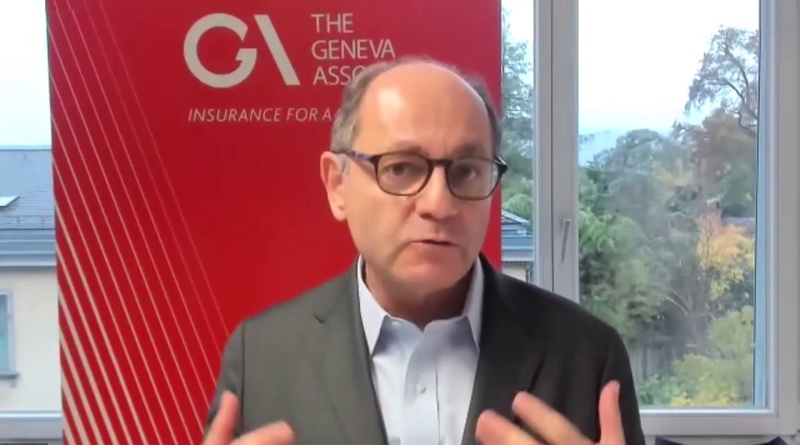
Jad Ariss, Managing Director, The Geneva Association, welcomes participants to the conference.
The life and health insurance industry has so far proved resilient to the COVID-19 pandemic. The tough lessons from the 2008 financial crisis prepared the industry to manage well both their liabilities and investments. But COVID-19 has also introduced many new challenges for insurers to grapple with. The Geneva Association’s recently expanded focus, from ‘ageing’ to ‘health and ageing’, has positioned it to tackle these issues with its research and dialogue initiatives.
Keynote Address
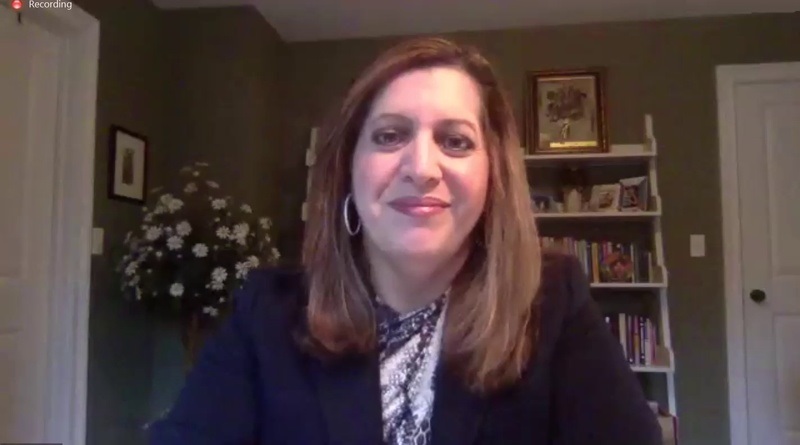
Yanela Frias, President, Prudential Retirement, gave the keynote address.
Yanela Frias, President of Prudential Retirement, highlighted the numerous uncertainties and hardships facing people in the U.S. and the world, stemming from the pandemic’s financial impacts, social and racial inequities and other factors affecting overall well-being.
The retirement savings gap worldwide, estimated at USD 70 trillion by the World Economic Forum (WEF), will only be exacerbated by the pandemic, with disproportionate effects on minorities. COVID-19 will make it more challenging for people to save for the future and meet their immediate financial needs.
Employers, generally more trusted by people than financial institutions, have a role to play in encouraging discipline and educating and advising their employees, alongside offering access to savings products. Research reveals the many advantages to this approach, such as improvements in employee retention rates and their physical and mental health and productivity.
Session 1: Understanding longevity today and the impact of COVID-19 on the elderly population
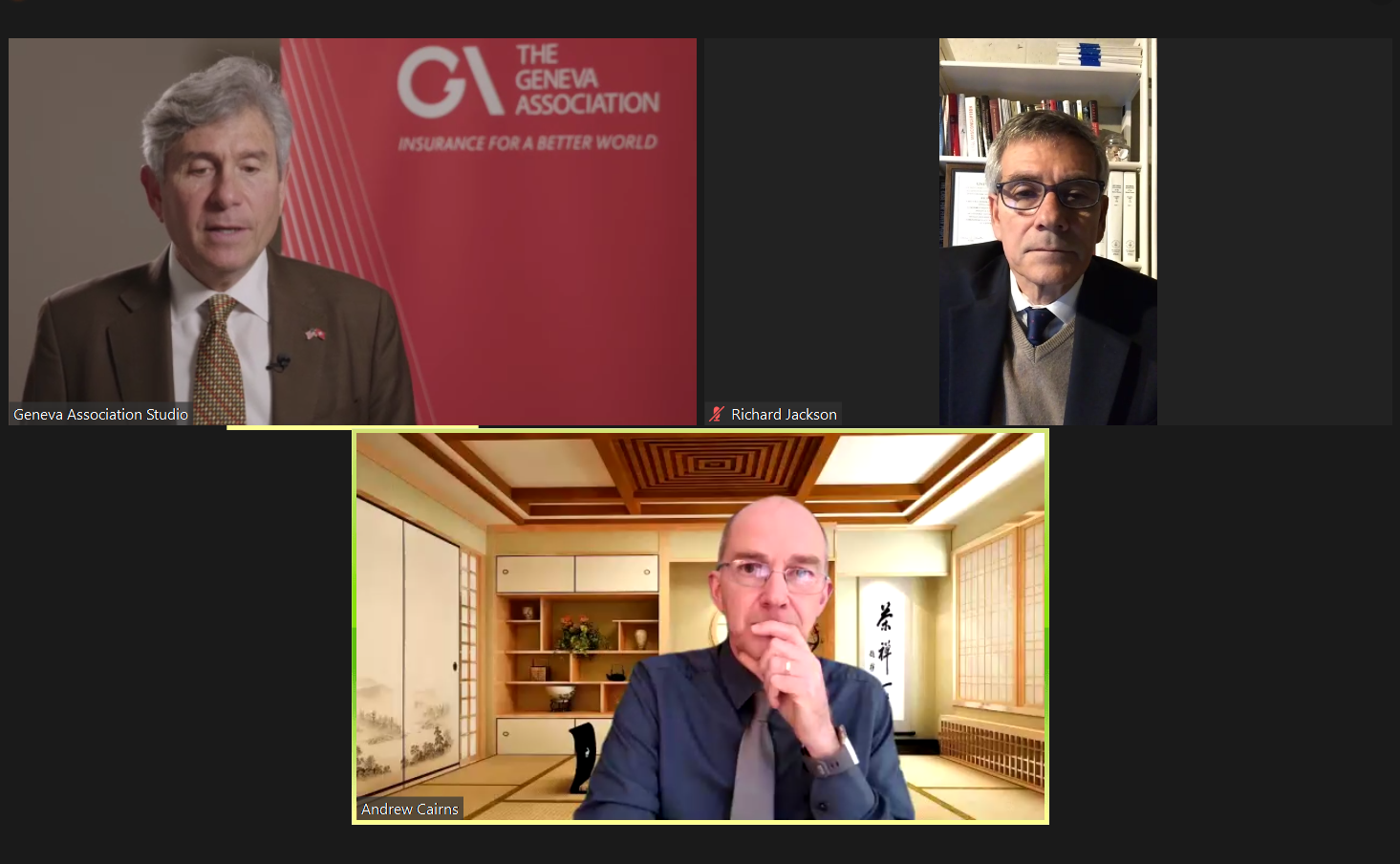
Top row: Ronnie Klein, Special Advisor Health & Ageing, The Geneva Association (Moderator); Richard Jackson, President of the Global Aging Institute. Bottom row: Andrew Cairns, Heriot-Watt University
Richard Jackson, President of the Global Aging Institute, opened with the question, “Are healthspans rising along with lifespans?” Pessimists suggest that there is generally a maximum age (commonly referred to as omega – w) and that more people will reach this in the future, optimists feel that w will continue to rise, while visionaries contend that breakthroughs in medical science will cause w to increase dramatically in the near future. Whatever the case, life expectancies are clearly projected to increase.
He explained that the compression of morbidity and the failure of success models are commonly used to measure the correlation between life and health expectancy. The former postulates that healthspans are rising as fast as or faster than lifespans and that disease will be limited to a short period at the very end of life, and the latter posits that advancements in science will increase the number of ‘marginal survivors’.
Extending productive work years to improve financial security requires continued good health; however, achieving this could strain health systems globally as complex comorbidities add to existing disease priorities. While disability among the elderly has decreased, lifestyle diseases in the middle-aged increase the risk of disability later in life.
David Blake of the Pensions Institute and Andrew Cairns of Heriot-Watt University discussed the effect of COVID-19 on higher-age mortality. The importance of the relationship between COVID-19 mortality and all-cause mortality was underscored, as many deaths ascribed to COVID-19 were accelerated rather than caused by the disease. Their model looked not only at accelerated deaths, but also at the longevity of survivors.
The results suggest that COVID-19 deaths by age are proportional to all-cause mortality, an important point often missed by the media. However, age is not the only factor and their model introduced others based on groupings such as the health of individuals within an age group (comorbidities) and living conditions. The relative frailty rate remained constant, so mortality rates were not materially different from all-cause mortality rates following infection.
The key takeaway was that COVID-19 has highlighted existing biases, such as geographical location, ethnicity and income level, that affect all-cause mortality.
Session 2: Connecting our physical, mental and financial well-being
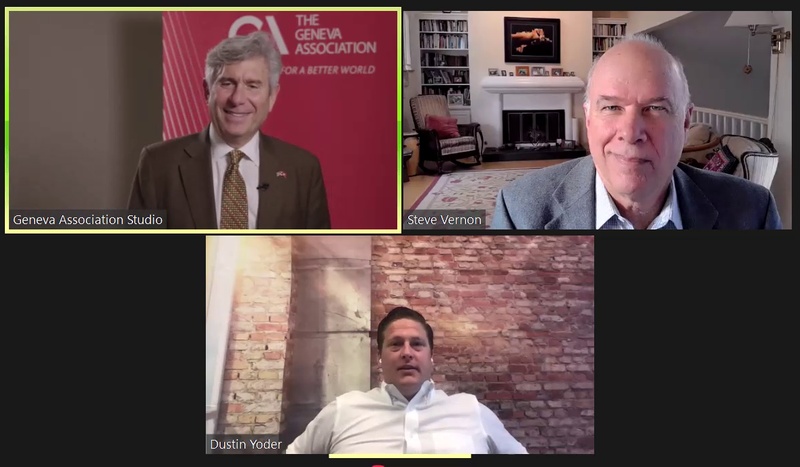
Top row: Ronnie Klein, Special Advisor Health & Ageing, The Geneva Association (Moderator); Steve Vernon, Research Scholar, Stanford Center on Longevity. Bottom row: Dustin Yoder, CEO Sureify.
Steve Vernon, Research Scholar at the Stanford Center on Longevity, explored the key factors in achieving increased longevity in an ever more complex environment. Over the last 10 years, healthy living habits have increased among the young but declined in the older population. On the whole, financial security and social engagement have fallen during the same time.
People value trusted financial advice to help them decide when to retire, how much to save for retirement and what expenses to reduce. An active social life is particularly important for a fulfilling life after retirement, and the close links between financial, physical and mental well-being were reinforced.
Dustin Yoder, CEO of Sureify, discussed how insurers can use technology and the vast amount of data being generated by the sector to encourage life insurance take up and improve policyholder retention through life cycle planning. Insurers are now able to provide coverage for previously untapped cohorts, for example diabetics who maintain a healthier lifestyle, tracked via a smartphone. Others are offering smartwatches and rewarding consumers for healthy behaviour.
Session 3: Healthy ageing: from reactive to proactive care
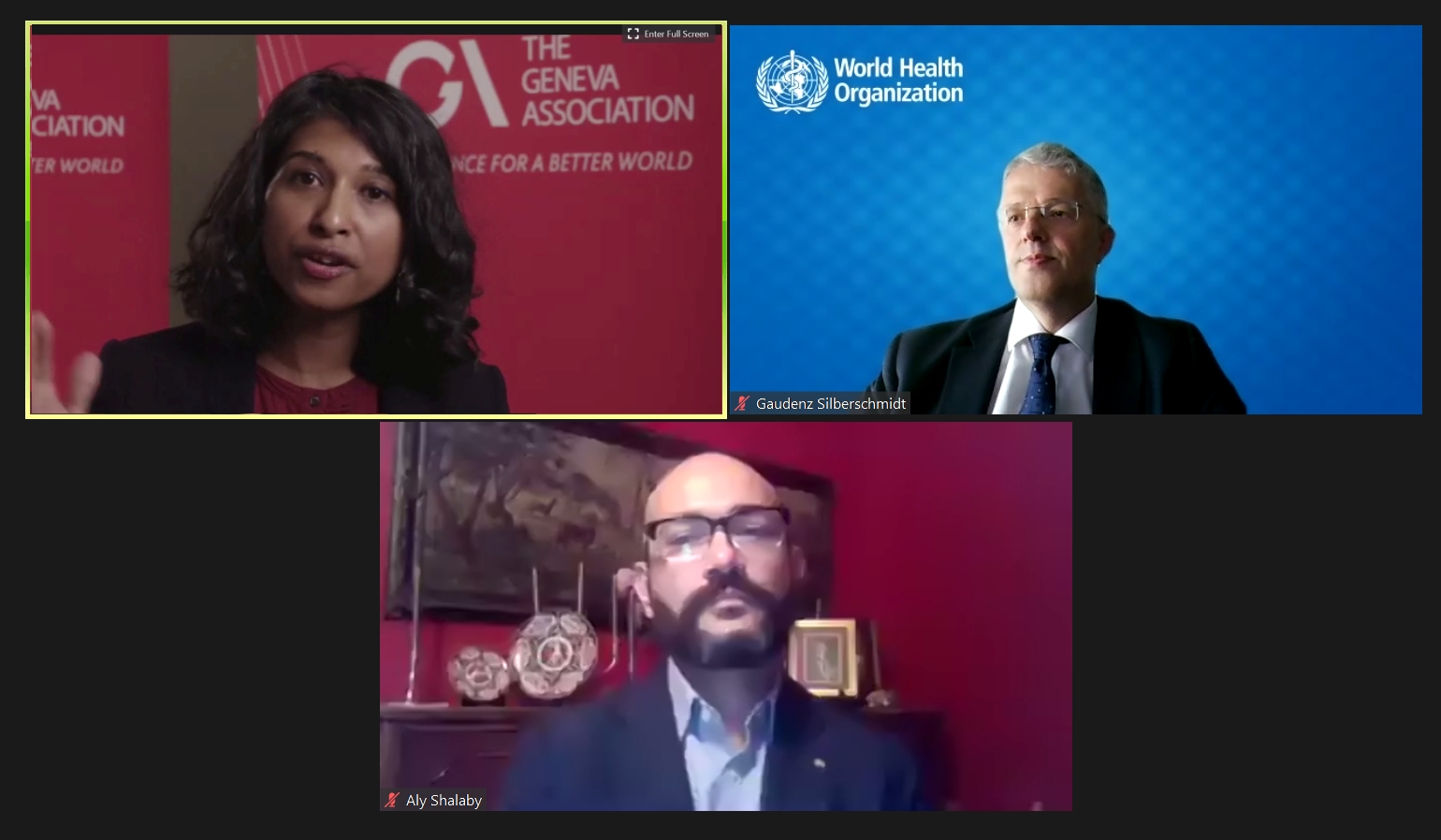
Top row: Adrita Bhattacharya-Craven, Director Health & Ageing, The Geneva Association (Moderator); Gaudenz Silberschmidt, Director for Health and Multilateral Partnerships, External Relations, World Health Organization. Bottom row: Aly Shalaby, Deputy Chief Medical Director, AXA OneHealth.
During the past 20 years, epidemics such as Ebola, SARS and MERS have illustrated the physical and financial toll of disease on society. While the 2003 outbreak of SARS killed only 774 people, the economic losses were vast, estimated at USD 40 to 54 billion.1 The Ebola epidemics in Liberia, Sierra Leona, Guinea and the Democratic Republic of the Congo caused thousands of fatalities. The three most affected West African nations suffered a total loss of USD 2.2 billion in combined GDP in 2015.2 The death toll from COVID-19 is currently just under 1.5 million, with economic losses estimated as high as USD 4.5 trillion in 2020, according to the World Bank.3 All of this clearly shows that the protection of the economy has a strong correlation to protection of health, said Gaudenz Silberschmidt, Director for Health and Multilateral Partnerships, External Relations, at the World Health Organization.
The Organization on Economic Development and Cooperation (OECD) estimates that only 2.8% of global health expenditures are for prevention. If just a fraction of current defense budgets in many large economies were earmarked for health promotion, disease prevention and preparedness, the global impact of the pandemic would have been much less.
Dr Aly Shalaby, Deputy Chief Medical Director for AXA OneHealth, described how AXA OneHealth is an example of how private health insurers are reprioritising their investments in health towards the prevention and primary health care agenda. The OneHealth model is a combination of physical medical centres, digital clinics and homecare in emerging markets where there are large protection gaps. The merits of such an integrated model are the abilities to collect data on individual consumers and provide holistic and proactive care. In OneHealth, professional coaches reach out to clients with the goal of promoting health and preventing disease.
There are several strategic opportunities for the public and private sectors to collaborate. Global organisations and the industry need a more systematic dialogue going forward and should prioritise adopting common terminology and data analytics to start.
Session 4: A View from above
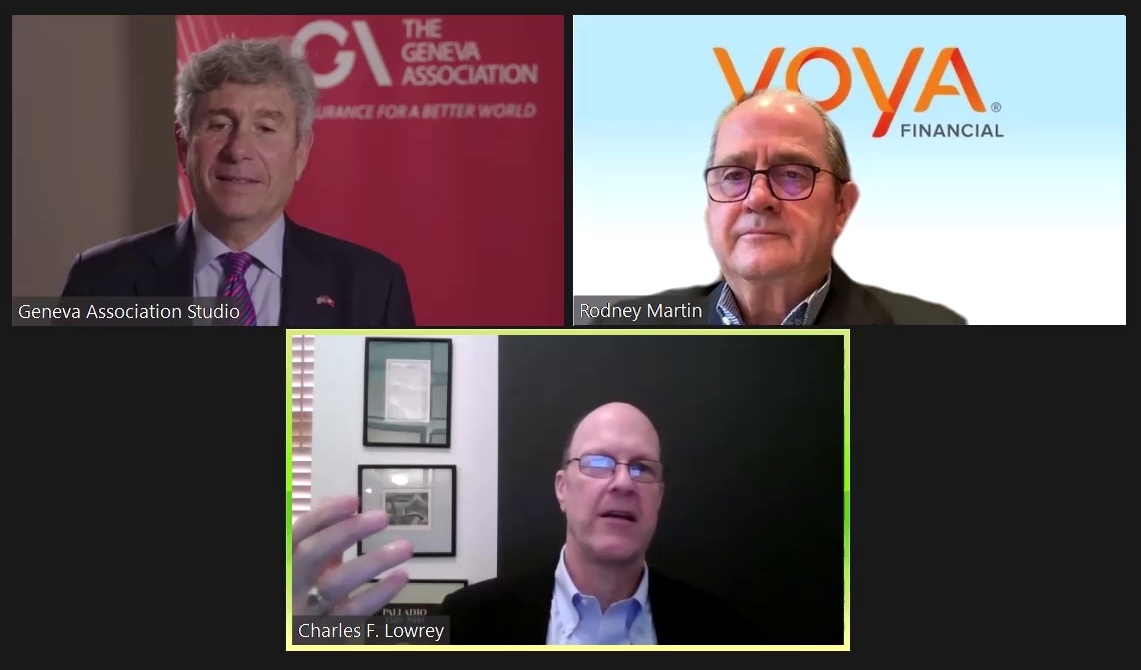
Top row: Ronnie Klein, Special Advisor Health & Ageing, The Geneva Association (Moderator); Rodney Martin, CEO, Voya Financial. Bottom row: Charles Lowrey, CEO, Prudential Financial.
The current low interest rate environment has made it harder for insurers to offer attractive returns to customers, impeding sales. As a result, many insurers were forced to sell lines of business, re-price products and diversify. Against this backdrop, Charles Lowrey, CEO of Prudential Financial, and Rod Martin, CEO of Voya Financial, discussed how their respective companies pivoted from individual to group sales and prioritised the simplification of products. They also spoke of their focus on balancing business growth and shareholder priorities with the welfare of society and employees.
Promoting diversity and inclusion is another shared approach. Companies 1) need to dedicate more resources to reach underserved markets in their recruitment efforts, 2) should invest in programmes geared toward minority businesses and 3) strive to ensure senior managers and board members are more representative of society. More generally, insurers also have a role to play in strengthening financial literacy.
The pandemic has catalysed changes in the life insurance business, with more demand for virtual interactions and sales than face-to-face. Companies rose to the occasion, learning to initiate and close sales remotely. Employees have been equally resilient in adapting to remote work, though this does not lend itself as well as in-person interactions to spontaneous conversations at meetings that spark new ideas or to passing down company culture to new employees.
References
- Lee, J.W., and W.J. McKibbin. 2004. Estimating the global economic costs of SARS. In Institute of medicine (US) forum on microbial threats, ed. S. Knobler et al. Learning from SARS: Preparing for the next disease outbreak: Workshop summary. Washington DC: National Academies Press (US).
- Centers for Disease Control and Prevention. Cost of the ebola epidemic. https://www.cdc.gov/vhf/ebola/pdf/impact-ebola-economy.pdf
- World Bank. 2020. Global economic prospects.

